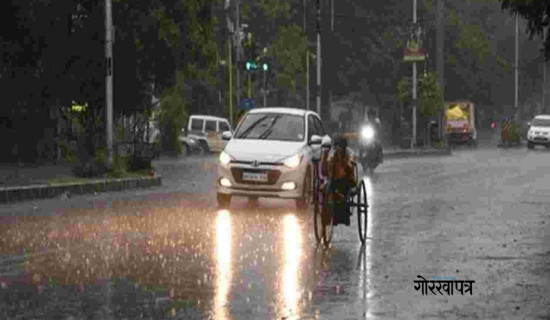- Saturday, 3 May 2025
Beyond Protest Signs: Psychology Of The Crowd
The chants in the streets are growing louder, more rhythmic, more resolute. But what drives them? In recent weeks, Nepal has found itself once again confronting the phenomenon of mass mobilisation. Teachers march for justice, disenfranchised youth rally for accountability, attempting to recall and reconnect with memories of a past that once offered a sense of stability. Something deeper is at play; something law books don’t quite explain easily. This is not simply political unrest. It is a psychological moment, and to understand it, we must turn to the insights of crowd psychology, a field born over a century ago, but still remarkably prescient.
At the core of this unfolding unrest lies a compelling question: What transforms individuals into a crowd? The answer, as French thinker Gustave Le Bon argued in The Crowd: A Study of the Popular Mind (1895), is not rooted in rational calculation but in emotional contagion. The crowd, he said, is a “psychological unit,” where individuals, submerged in a shared identity, surrender personal restraint to a collective will. “The conscious personality vanishes,” he wrote, “and a collective soul is formed.”
Demonstrations
Nepal’s recent demonstrations echo this theory in haunting detail. What began as peaceful assemblies quickly evolved into emotionally charged collectives. Memories, real or imagined, of coherence, leadership, and order filled the void left by current uncertainties. Citizens were no longer acting as private individuals, but as a unified entity, gripped by symbolic meaning rather than policy logic, but Le Bon’s theory is just the beginning.
Sigmund Freud, in his 1921 work Group Psychology and the Analysis of the Ego, took Le Bon’s insight further. He proposed that the crowd give up their individual sense of self and form a shared identity, often centred on a symbolic figure. This figure becomes what Freud called the “ideal ego”. In Nepal, when certain well-known public figures return to the spotlight — especially those linked to past stability or authority — they often trigger this kind of emotional response. They don’t need to present a plan or manifesto. Their presence alone awakens a deep, collective desire for safety and order, uniting the crowd through a common feeling rather than reasoned thinking.
Another master of the crowd—Elias Canetti, in Crowds and Power (1960)—spoke of the crowd as a site of emotional discharge. Crowds, he argued, form when the unbearable isolation of individual grievances finds release in collective expression. This theory speaks poignantly to Nepal’s moment: the disillusioned youth (health workers), the ignored educator, the underpaid worker—all are drawn not by common ideology, but by shared disenchantment. The street becomes therapy; shouting turns into speech.
What complicates this psychological eruption is its legal dimension. The Constitution of Nepal, under Article 17(2) (a), guarantees every citizen the right to peaceful assembly, affirming the fundamental freedom to gather without arms. This right is in harmony with international human rights instruments, notably Article 21 of the International Covenant on Civil and Political Rights (ICCPR),
to which Nepal is a State Party. The ICCPR recognizes the right of peaceful assembly as essential to a democratic society. However, both the Constitution and international law allow for reasonable restrictions in the interest of public order, public health, national security, or the rights of others. As such, Nepal holds a dual obligation: to respect and facilitate peaceful gatherings while also ensuring that such assemblies do not lead to violence, unrest, or infringement upon the rights of others. But what happens when emotion eclipses reason—when the collective passion of the crowd becomes so intense that it scares even those who initiated the movement?
Damage
Crowds, as Le Bon warned, often absolve individual accountability. No one leads, no one owns, and yet damage is done. Who then should be heard? Who should be held accountable? These are the constitutional riddles we now face.
But to reduce a crowd to a threat is to miss its meaning. A protest is not merely a moment of disruption—it is often a symptom of something systemic: the breakdown of communication between the people and their institutions. Courts, lawmakers, and officials must realize that discontent does not emerge overnight. It grows in the silence of unmet needs, in the apathy of procedures, and in the failure to emotionally resonate with public sentiment. If democracy is to survive, it must do more than enforce. It must be experienced while upholding the spirit of the Constitution.
Protests are more than disturbances—they signal a breakdown in communication between citizens and the state. While ensuring public order is vital, a healthy democracy must listen, respond, and rebuild trust through meaningful engagement.
(The author is a freelancer.)









-original-thumb.jpg)







